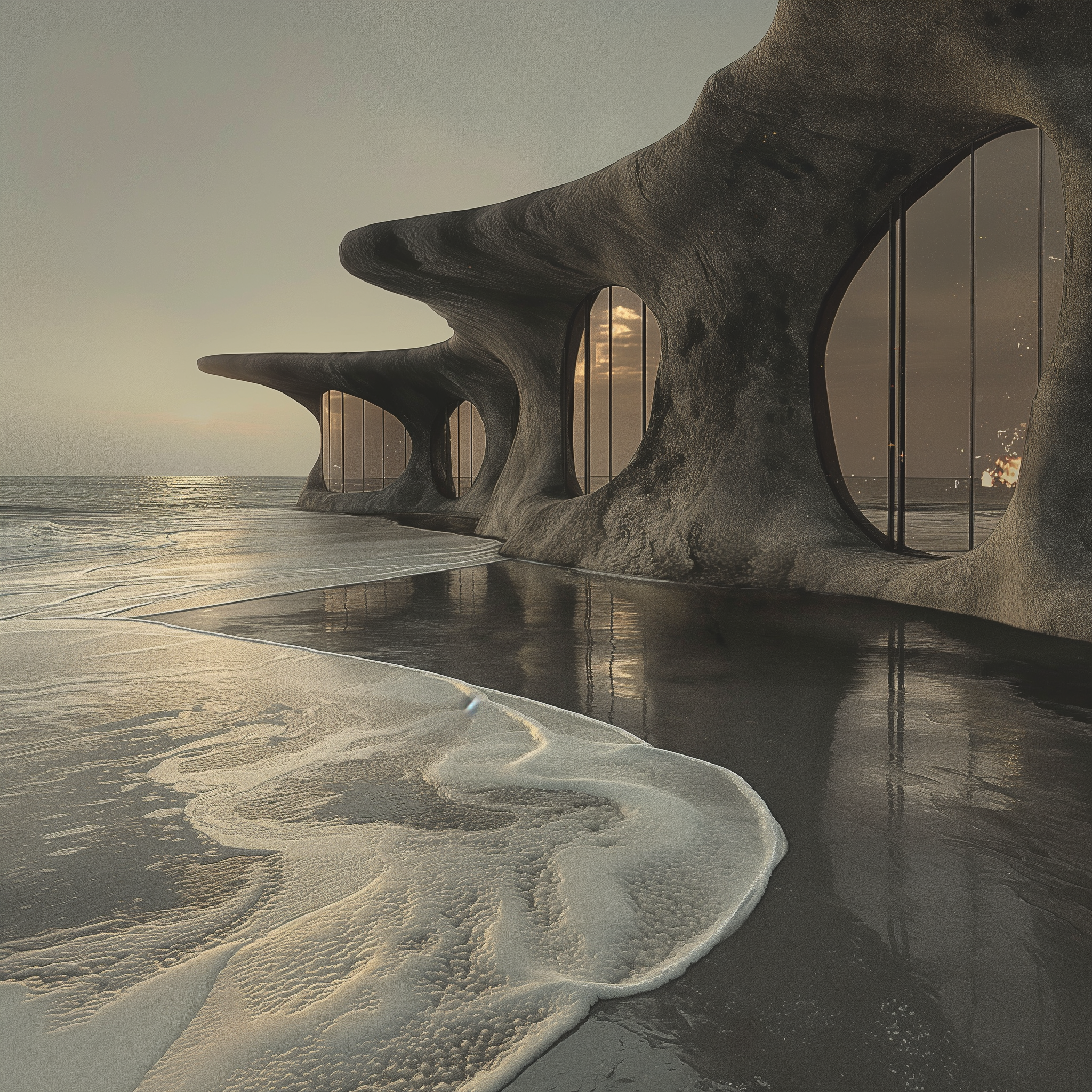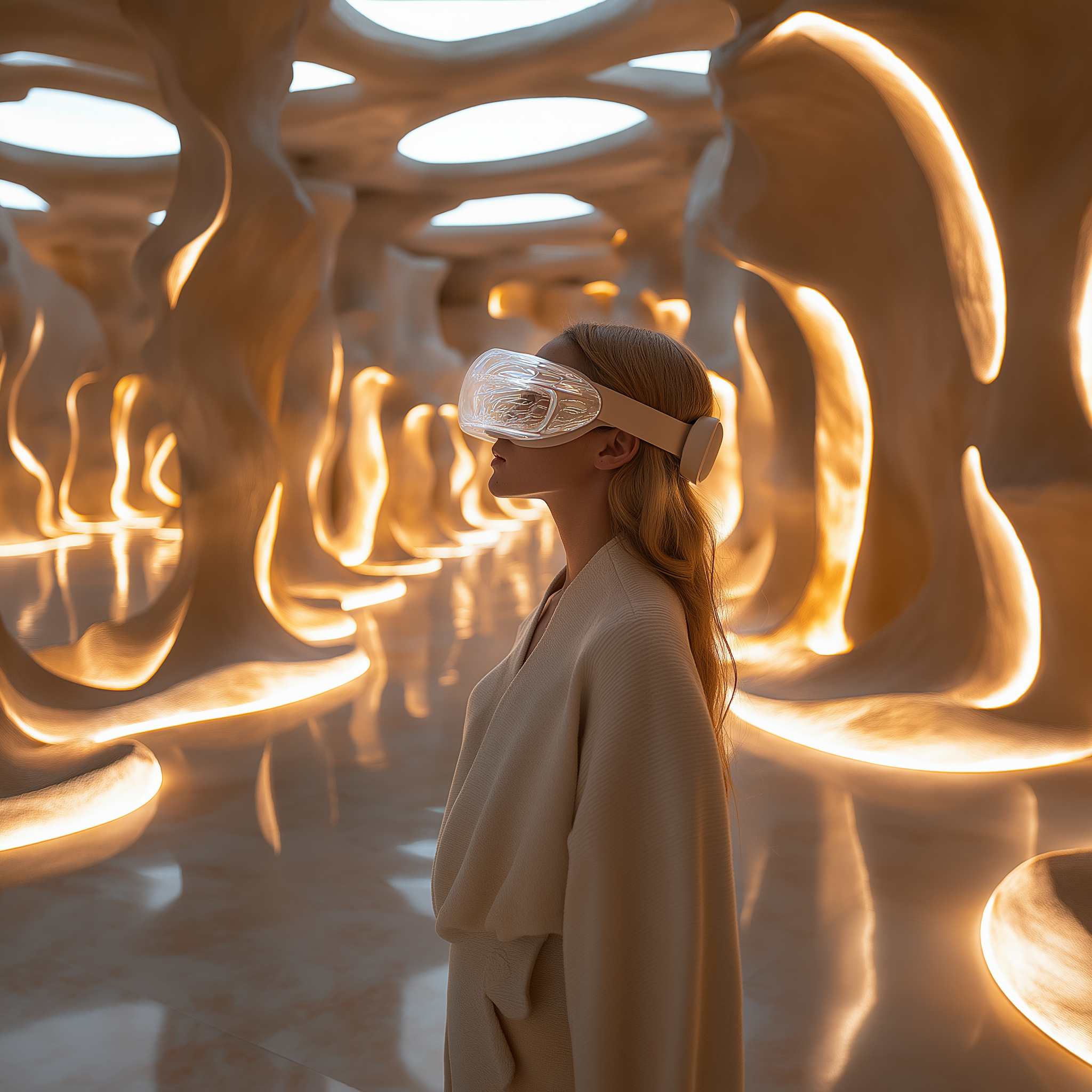The Fusion Between the Physical and Digital in Architecture
I have always felt that architecture is more than just materials, proportions, and structures. Architecture is emotion, memory, and perception. With technological advancements, we find ourselves at a turning point where the digital is no longer just a tool but a space in itself. The fusion between the physical and the digital is no longer a future possibility—it is our present reality.
This evolution not only redefines the way we design but also how we feel about spaces. We now have the opportunity to create environments that are not only visually impactful but also responsive to our emotions, needs, and moods in real time. Neuroarchitecture, combined with artificial intelligence and digital design, provides us with tools to explore this intersection between matter and algorithm, between the tangible and the immersive.
While exploring these ideas, I am currently working on a concept that integrates these principles into an immersive space—an environment that bridges digital perception with human emotion. More on this soon.
Lucia Silva Studio
How Digital Architecture and AI are Transforming Spaces
1.Generative Modeling and Artificial Intelligence in Architectural Design
Designing spaces is no longer purely manual work. Today, with computational design and AI, we can generate thousands of variations of a single environment, optimizing each element to enhance energy efficiency, light distribution, or even the sense of calm or dynamism it conveys.
Adaptive spaces that evolve based on user interaction.
Simulation of emotions through digital materials and dynamic textures.
Design based on neuroscientific data to enhance well-being.
Example: By studying movement and behavior patterns in hospitals, we can design hallways with an organic flow, reducing the feeling of confinement and improving patient orientation.
2.Virtual Reality, Augmented Reality, and Immersive Architecture
I have always been fascinated by architecture’s ability to immerse us in different emotional states. Now, with virtual and augmented reality, we can expand that immersion, building spaces that exist in duality between the physical and the digital.
🕶️ VR: Allows us to design spaces without physical constraints, where imagination is the only limit.
📲 AR: Overlays digital information onto the real world, generating narrative layers on built architecture.
💡 Interactivity: Spaces that react to user presence, transforming according to emotional states.
Example: In a digital refuge designed for introspection, walls could change color and texture based on the user’s breathing rhythm, adapting the environment to their level of calm or anxiety.
3.Neuroarchitecture and the Emotional Impact of Digital Spaces
One of the most fascinating aspects of this new architectural era is its ability to generate personalized experiences. Neuroarchitecture teaches us that light, sound, and shapes directly affect our nervous system in ways we often do not consciously realize. When we combine this knowledge with artificial intelligence, we can design spaces that are not only functional but also actively adapt to the user’s psychology.
Light and color: Lighting systems that adjust temperature and hue based on the time of day and user activity.
Sound and architecture: Spaces designed to modulate echo and ambient noise, optimizing concentration and relaxation.
Digital materiality: Textures in virtual environments that evoke real tactile sensations, creating a deeper connection with the space.
Example: A hospital could incorporate intelligent walls that project therapeutic images and sounds based on the emotional state of patients, improving their recovery and well-being.
Lucia Silva Studio
The Future of Hybrid Architecture
The integration of AI and digital design is not only transforming built spaces but also how we interact with them. We are witnessing the emergence of new architectural typologies:
✔ Cities with interactive digital layers, accessible through augmented reality devices.
✔ Buildings that respond in real time to human behavior, adjusting their structure and functionality.
✔ Environments designed simultaneously in the physical world and the metaverse.
✔ Therapeutic spaces that combine neuroarchitecture and virtual reality to enhance mental and emotional well-being.
Example: Projects like the one I'm working on, an immersive refuge in the metaverse, explore how digital spaces can enhance emotional health and create new experiences of introspection and personal transformation. This is a concept that aligns closely with my current explorations in the fusion of digital architecture and emotional design.
Conclusion
The future of architecture is not a dichotomy between the physical and the digital. It is a fusion, a dialogue between both worlds. Artificial intelligence, neuroarchitecture, and virtual reality are redefining how we design, perceive, and inhabit spaces.
For me, this transition is not just a technical shift; it is an opportunity to create environments that are more human, more sensitive, and more attuned to our emotions. In this new paradigm, architecture is no longer static—it is alive, reactive, and deeply connected to those who experience it.
How do you imagine the spaces of the future? Do you think digital environments can generate the same emotional impact as physical ones?


